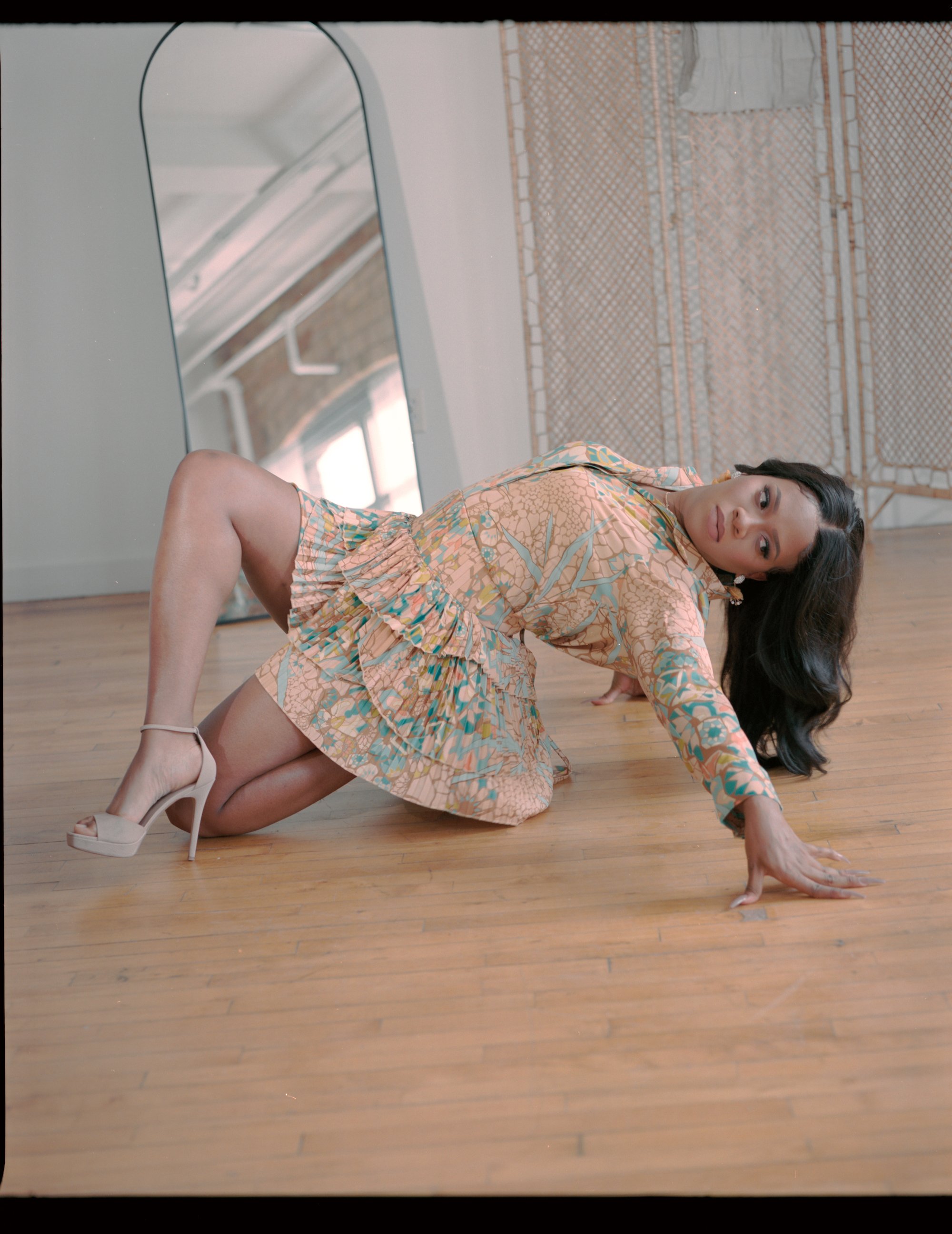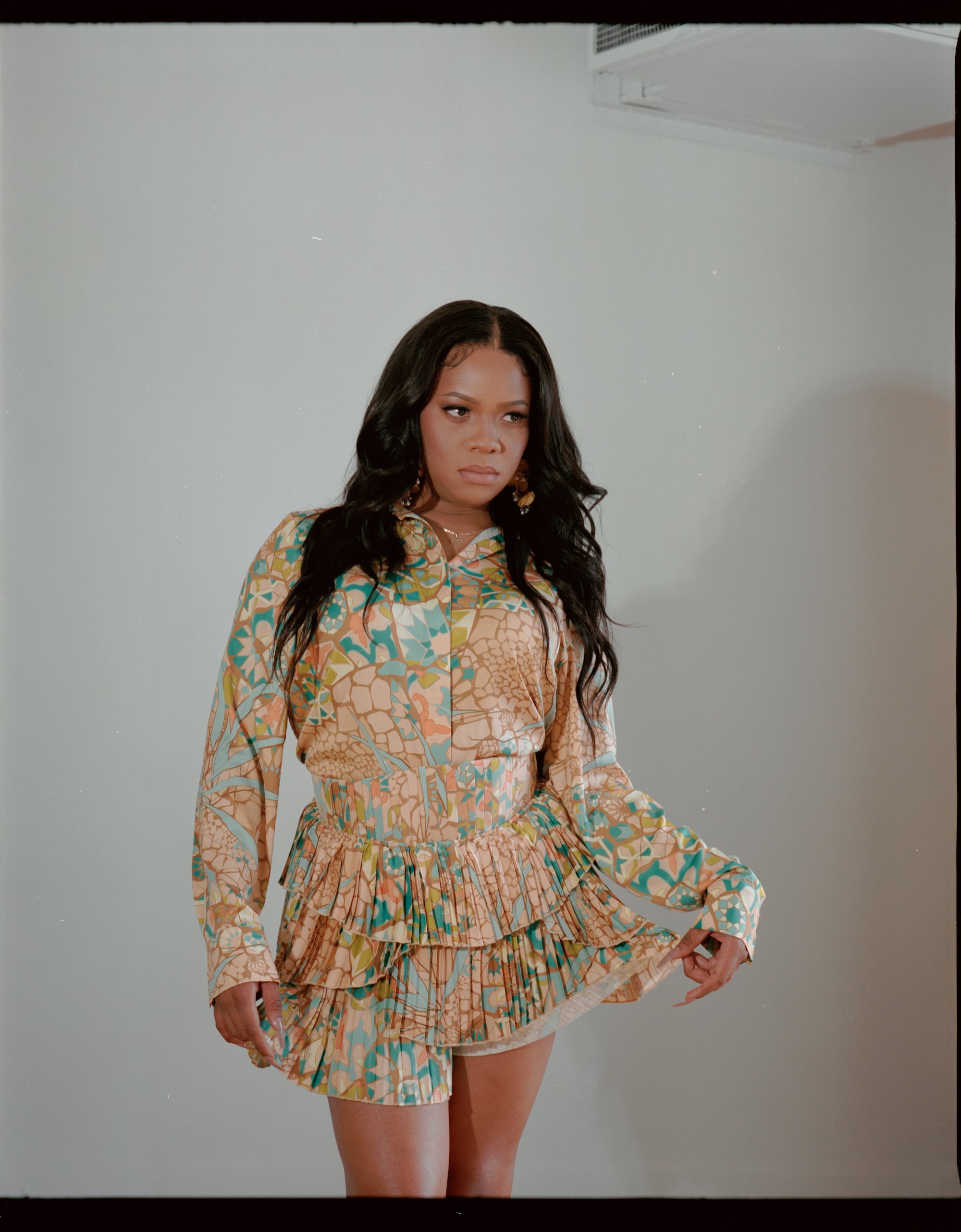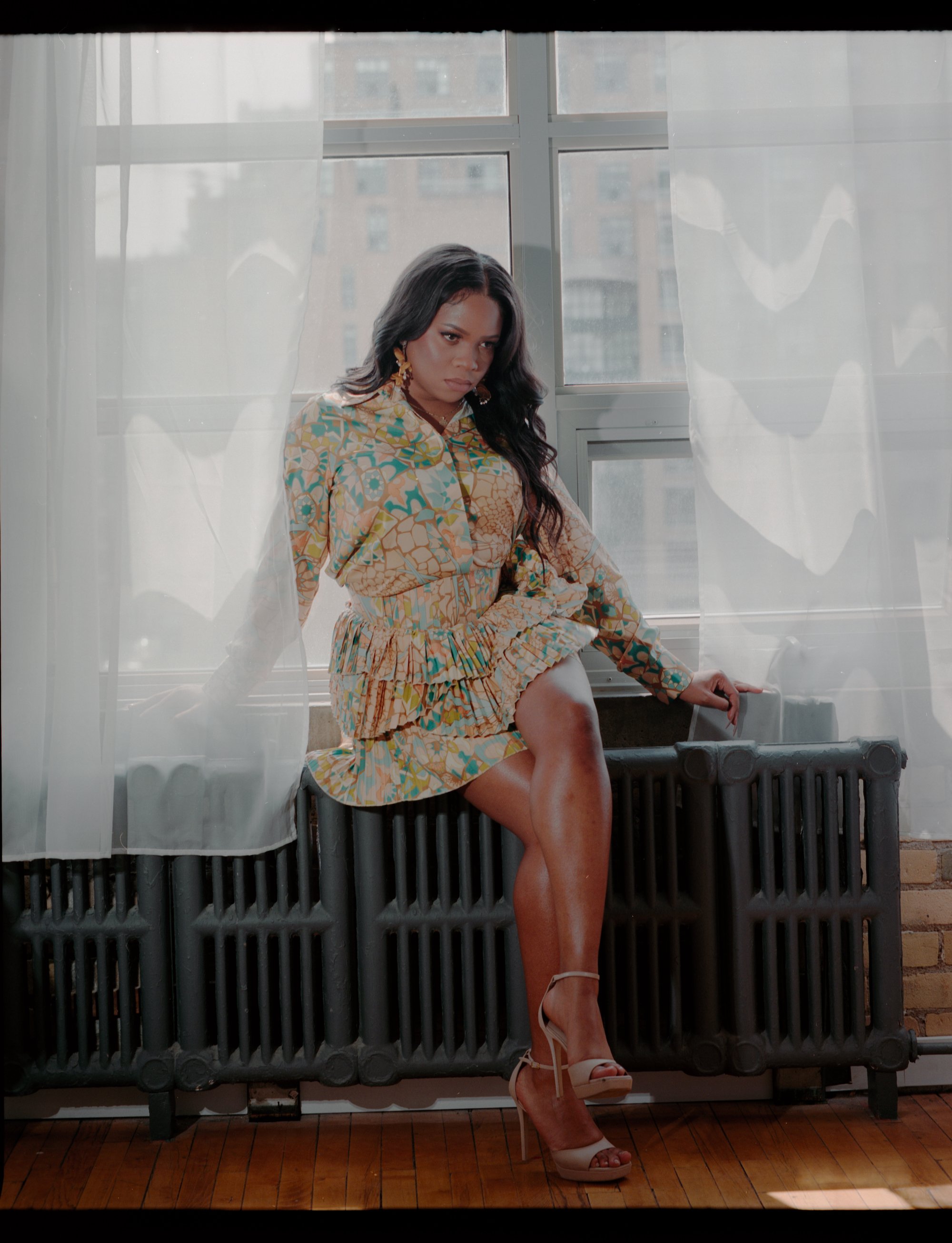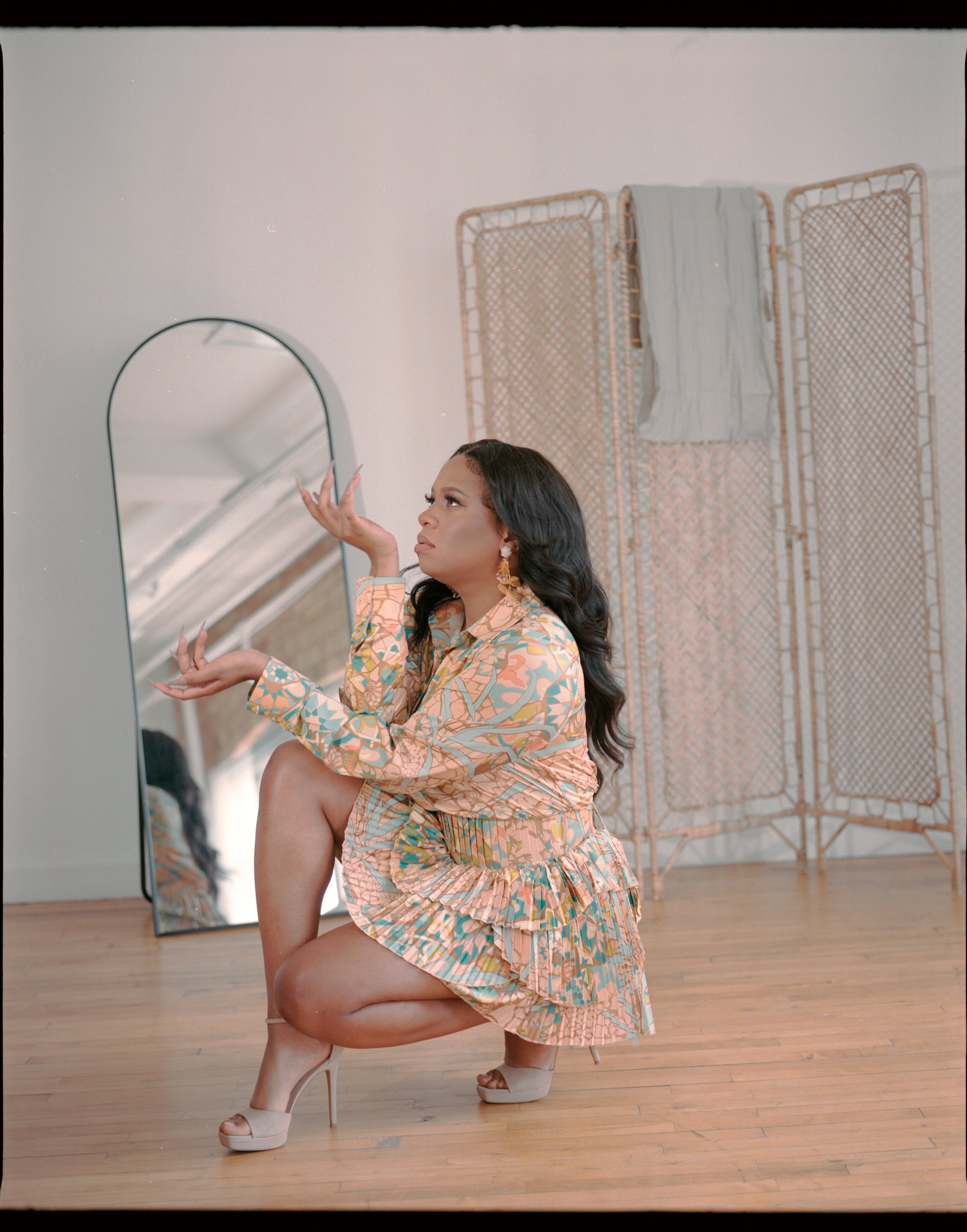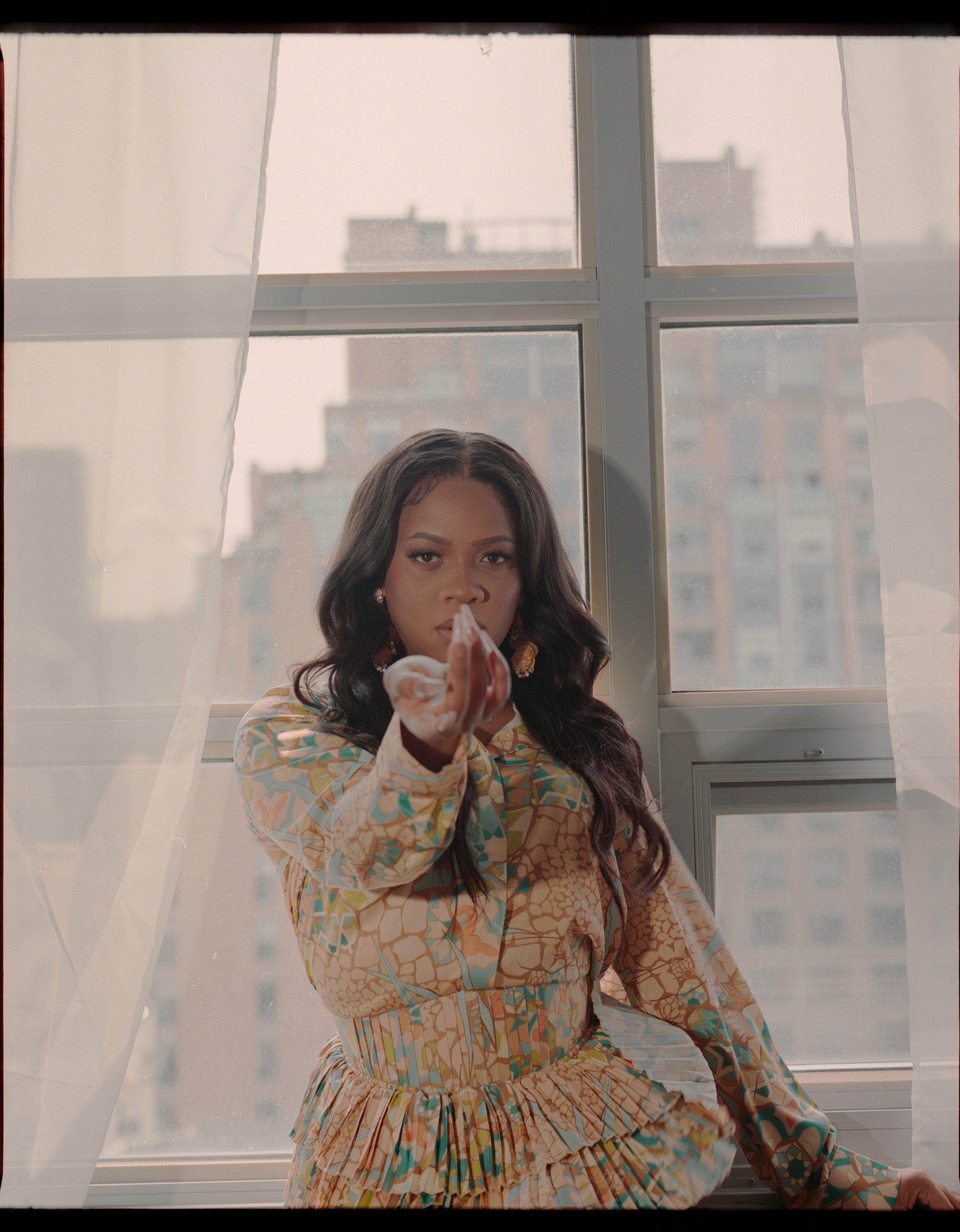Ballroom is Not for Everyone: Exploring the Significance of Ballroom in Canada
It is a widely-known fact that Black queer and trans people across Canada experience violence and systemic discrimination––the deadly consequence of existing within a nation that continues to be structured by anti-Blackness and heteropatriarchy. O Canada, how little has changed. While Black queer and trans communities in this country are routinely terrorized by law enforcement and experience significant challenges accessing social services (e.g., housing and mental health supports), oppression is not the only story that frames the lives of Black queer and trans people in Canada. Against the backdrop of violent homophobia and transphobia (–– see case of O’Shae Sibley), Black queer and trans communities have posed for a portrait that is so undeniably beautiful. In the face of audacious resistance from the larger society, Black queer and trans communities continue to advocate for change––articulating new visions for our world that completely restructures how we understand race, gender and gender identity. It is through this process that Black queer and trans people have carefully curated spaces (e.g., the Ballroom scene) to experience true freedom, true joy and true love––for themselves and for each other.
But Ballroom is not for everybody. Jennie Livingston’s 1990 film Paris is Burning showed us that. For the first time, Western mainstream society witnessed what it can look like for Black queer and trans people to celebrate themselves with no regard for white or non-queer validation. Though at the time groundbreaking, the film’s exploration falls short as the story is interpreted through the lens of a white heterosexual woman, Jennie Livingston. Moreover, while Paris is Burning presents an important representation of the lives of Black queer and trans people, its context is confined to the United States. How do Black queer and trans people experience Ballroom in Canada? And who are the Black people defining Ballroom across Canada? These were the questions that I was interested in exploring when I was provided an opportunity to speak with the “Queen of Canada,” Tamar Miyake-Mugler, co-founder of the House of Louboutin and member of the Iconic International House of Miyake-Mugler.
Photo: Vonny Lorde
I sat down with Tamar to discuss her journey to discovering Ballroom and her experience curating spaces in Canada for Black queer and trans communities to exist in.
Andre Harriott: What was your childhood like?
Tamar Miyake-Mugler: I grew up in a very conservative Christian household––Seventh-day Adventist––and went to a private Christian school. It was a very sheltered and structured upbringing, especially being a first-generation Canadian.
AH: Did you feel like you fit in as a child?
TM: I never actually fit in. I was the odd one out, the gay one––the visibly gay one. So it was always difficult, especially with severe bullying, whether at church or school.
AH: Who or what supported you to become more comfortable with your queerness?
TM: The same people that I grew up with. I have had the same best friends for the past 20 years, and without them, I probably would not have survived life. They literally empowered me to just be who I want to be. When I went to college, I met a different set of people that were not from my community and that I didn't grow up with. And that's when I met a gay person. I was like, “Oh my God. You're gay like that? Like outside? Wow. And Black? Wow.” So that was kind of where I opened my eyes and started to see the world for what it really was. And it wasn't what I was told. It was validating to realize that you're not a bad person, you're not a sexual deviant, you're not hurting children, and you're not lying to people.
Photo: Vonny Lorde
Photos: Vonny Lorde
AH: What were some of your aspirations as a child?
TM: First, I wanted to be a pastor, but the pastor was super shady to me, and I didn't understand why at the time. Only since I'm older now do I know it was homophobia. So as soon as he told me that he wouldn't baptize me, I thought, Okay, well I guess that idea is scrapped. And so I never really had an idea of what I wanted to do as a career. In my house, you’re not taking a year off after high school; you're going straight through to post-secondary. So I literally opened up the book that shows you what courses are available in college or university, and I stuck my finger in, and it said Broadcast Journalism. So I'm like, “That's what I want to do.” After high school, I moved to Toronto and went to Seneca at York, and I took the Broadcast Journalism program. I was always like, Well, there's no Superstar 101 in college or university, so I'm just going to choose whatever will shut my family up.
AH: Tell me about your first ball.
TM: Later on, as an adult, I had my first little boyfriend, and he was in Ballroom. That's how I was introduced to Ballroom. I remember my first ball was at the 519 Community Centre in downtown Toronto on Church Street. It was just like hearing people explain going on an acid trip or doing mushrooms or some kind of psychedelic drug. You're just seeing so many things. It's like a sensory overload only because of all the things you were told about being gay and being queer. Like, here are your peers, your agemates that have created a whole fantasy world where they can just exist and be and break down all those stereotypes and things that they were told not to be. In this arena, you are actually encouraged to be all those things and more. Like bend your wrist, be as feminine as you want to be or not. And it was literally a trip. I was tripping out.
So that was really the initial reason why I was even around and involved. I never had a real category that I was walking for the first little bit. I didn't have my own name in Ballroom for years. I was just known as that guy's boyfriend. It wasn't until after we broke up that I took a couple of years off from everyone and came back to my mom's house. I deleted that life for like a year and a half, two years. I did all the personal work that I needed to do to not feel invisible or that I had to hide my greatness in order for someone else to shine. Then, I came back and I just became this version of myself where I am the girl. I am the most decorated in Canada. I am the trendsetter. I am a staple, not just here in Canada, but in my category internationally, around the world in Ballroom. I'm at the top of my game. I'm the one to beat. So I feel like if it wasn't for that kind of experience, I might not have had the hunger to strive and push for excellence the way that I did.
AH: Can you speak a little bit about the origins of Ballroom in Canada?
TM: So I'm not exactly sure how Ballroom started here. I just know of the founding members of the Toronto Kiki Ballroom Alliance. Just to name a few: Legendary Marvel, Legendary Twysted, Legendary Sevyn and Legendary TKO. They all started what we know now as the Toronto Kiki Ballroom Alliance. That was about maybe 16 or 17 years ago. It basically started by them seeing Sevyn, whos’ from New York, voguing in the club, and they were like, “What is going on?” They pretty much just adopted that and learned and taught themselves. Then, with YouTube and everything, they were able to tighten up their craft and start learning about the Ballroom scene in New York City. So they would go from here, to New York, and back when they were super young just to get involved in the Ballroom scene, and that started the Ballroom scene here. They single handedly started the scene and kept it going. They are the ones that threw balls when it wasn't popular to be in Ballroom or throw balls. There was no corporate funding. It was them making it work, bringing the culture here, teaching us what Ballroom actually means.
AH: What needs to happen to expand the Ballroom scene in Canada?
TM: I think the Canadian Ballroom scene is actually great as it is, but what could actually make it better is more cross-pollination and a stronger emphasis on education and knowing our history. That way we can ensure that the mistakes that are made in the past don't happen again and that people remember why we're here and stick to the authenticity of who Ballroom is created for––marginalized folks. More education would make Canadian Ballroom bigger and better. Also, being able to get ahead of trends versus going behind what happens in the United States and making sure that our market value is as high as across the border.
AH: What are some of the challenges in Ballroom right now?
TM: As society continues to become more aware and inclusive of those with gender-expansive identities, there has been a divide about a main category in Ballroom culture. In Ballroom, there is a category called “realness,” which means to pass in heteronormative society. Realness is a category of Ballroom that has so much historical significance; however, if you are non-binary walking in a category that is just about binaries, that presents some challenges. So, in Montreal, for example, a lot of times, they won't have the realness category at a ball.
Also, colorism is still very real, but Ballroom at large is doing a great job at destigmatizing and normalizing that the light skin, the straight hair, the tinier nose is not the more beautiful, and the darker-skinned girls are letting us know it. They are coming for our necks, and I love it.
Photo: Vonny Lorde
Photos: Vonny Lorde
AH: What does it mean to be Black in Ballroom today? Is Ballroom being exploited and taken over by non-queer and white people?
TM: Being Black in Ballroom is one of the most liberating experiences that I've ever had. I really appreciate the spaces that were created for us, by us, and are preserved by us––where we can be celebrated exactly for who we are on the inside and the outside. Is Ballroom being exploited and taken over by non-queer and white people? White people take over every culture that is beautiful. They steal from every culture that is beautiful since the beginning of time. So it's not really shocking that it's happening with Ballroom as well. But luckily, Ballroom is now a much more vocal and boisterous community, and we don't really take that lightly, so it doesn't go without a fight. But we definitely come in herds, no matter where we're from around the world. When we do see Ballroom being bastardized or whitewashed, we do definitely speak up in big herds. Even if white people are voguing or are involved in the ballroom scene, which wasn’t built for them, they need to approach it with respect and authenticty.
AH: What are your thoughts on Beyoncé’s RENAISSANCE album?
TM: First of all, she is singing her ass off on that album. That's first and foremost. Second of all, I think it was the most beautiful love letter to the people that actually made her into the sensation that she is: the queer community. I think the queer community, mainly the Black queer community, has a strong hand in setting trends in every little pocket of anything that is entertainment or fashion. We sensationalize and obsess over her––like the Hive is not owned by the straight girls; it's owned by the gays. Truthfully, it's chaired by us. It is run by us. It is managed by us. It is maintained by us. And I think that her RENAISSANCE album truly was a love letter to us. It was validating. It made us feel good. And she actually brought the girls in to do it. To see my Miyake-Mugler brothers and sisters and people that I know on the album. Like Malik, my brother. You're in the Tiffany ad voguing, literally she [Beyoncé] said your name. She's with you in the room. You're actually there. Being able to see these things actualize is crazy because you never thought when you got into Ballroom that you would have these opportunities. You got into Ballroom just because you needed a place to belong. You needed a family. You needed to let it out, and you needed to grow as a person. And there was no money in Ballroom. Now, you can win a $1,000. You can win $10,000 at a ball, or you can open yourself up to new career paths. But when we all got into it, it was not for that. That was not even an option.
AH: Have you or anyone else been thinking about the documentation of Ballroom in Canada?
TM: Yeah, absolutely. I think that's something that people in my generation and above are really paying attention to. First of all we don't have anything that's formally documenting what's happening. We had a TV show here in Canada produced on CBC Gem, I believe, called the CBX: Canadian Ballroom Extravaganza, which was a competition show produced by Twysted, Gabrielle and some other people. It isn't the true form and structure of a ball, just like HBO’s Legendary, but it is based in Ballroom categories and culture made to be more palatable for TV in a competition style. I think Pose really revolutionized how the mainstream looks at Ballroom because it actually gave an in-depth look taken from real stories about who we are, what we do and why we do it. There's an exhibit right now with Toronto History Museums where we were asked to do a part of an exhibit there about Ballroom. So it's starting to happen.
Photo: Vonny Lorde
AH: What has Ballroom meant to you?
TM: I owe a huge part of my life to Ballroom because it's afforded me opportunities and added so much more value to my life than I ever could have imagined. If you had told me 11 years ago that this is where I would be today, doing the job that I do now, having gone through what I've gone through, I would never believe you. I could probably bet my last dollar, which wasn't much, that this would never be my life. I can actually see my first class of kids that are now leaders. And when I go to one of their practices where they're teaching their kids, I literally just sit there and sob because my only goal in this life, which statistically is not even supposed to be long, is to leave this place better than I found it so that the next generation can do the same. Seeing that actually happen before my eyes while I'm still alive and viable to appreciate it is something that I don't think I would have gotten in any other way had I not been in Ballroom. I know that there are lives that have been saved because I was able to be a part of them. Culture has changed here because of things that I've done, and I don't think a lot of people get to see that in their thirties. If I die tomorrow, I know that my legacy is strong enough that I didn't live for nothing, and the life expectancy for somebody like myself is around 35. That means that I have four years left, statistically. If I don't make it past the next four years, then I feel like the next generation of people that I was able to instill all my lessons into is going to be okay, and it should get better.

